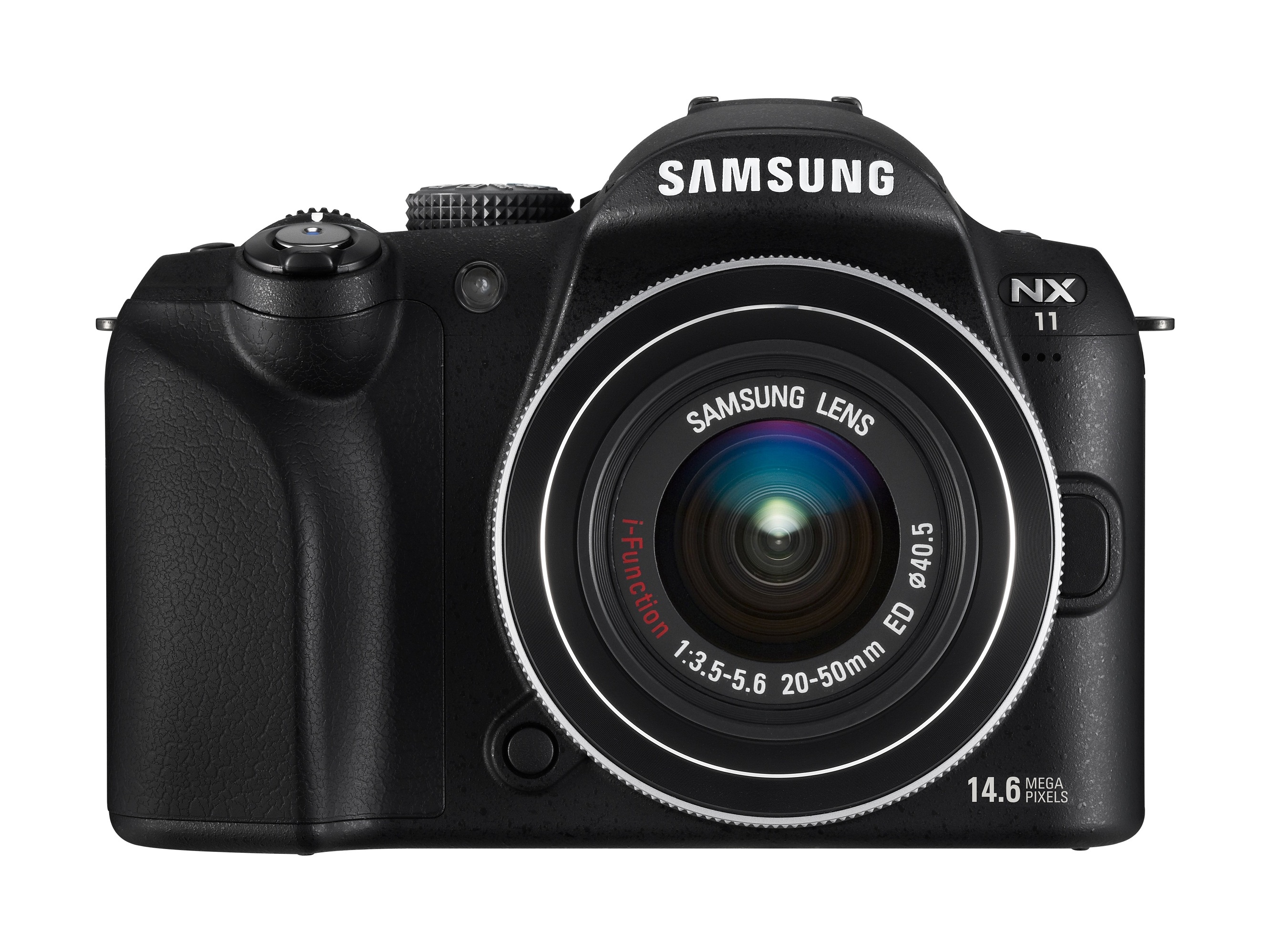Why you can trust TechRadar
We shoot a specially designed chart in carefully controlled conditions and the resulting images are analysed using DXO Analyzer software to generate the data to produce the graphs below.
A high signal to noise ratio (SNR) indicates a cleaner and better quality image.
For more more details on how to interpret our test data, check out our full explanation of our noise and dynamic range tests.
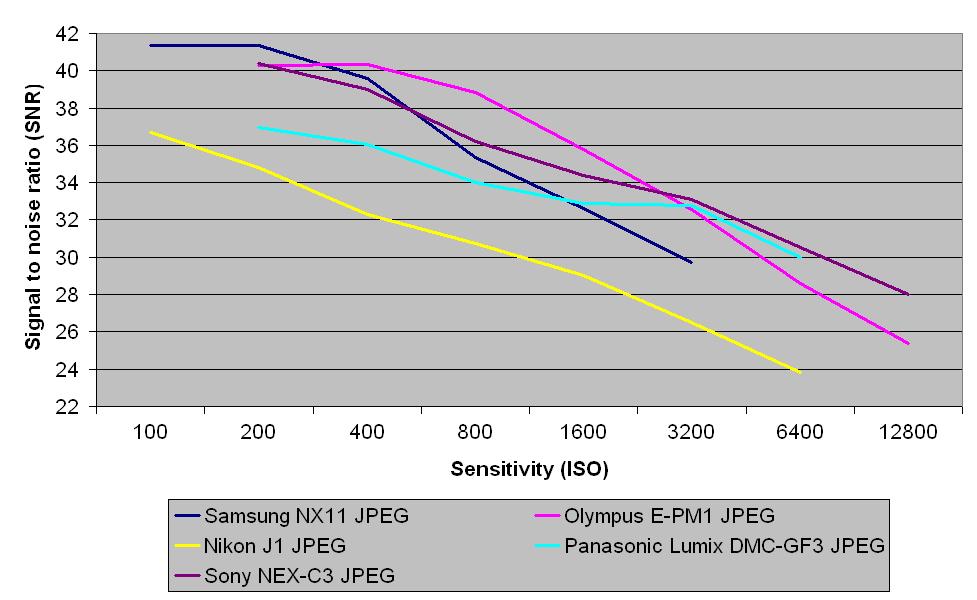
JPEG images from the Samsung NX11 show better results than the Olympus E-PM1, Nikon J1, Panasonic Lumix DMC-GF3 and Sony NEX-C3 at the lower end of sensitivity range. However from a sensitivity of ISO 400 the signal to noise ratio drops, only beating the Nikon J1's results.
Raw images
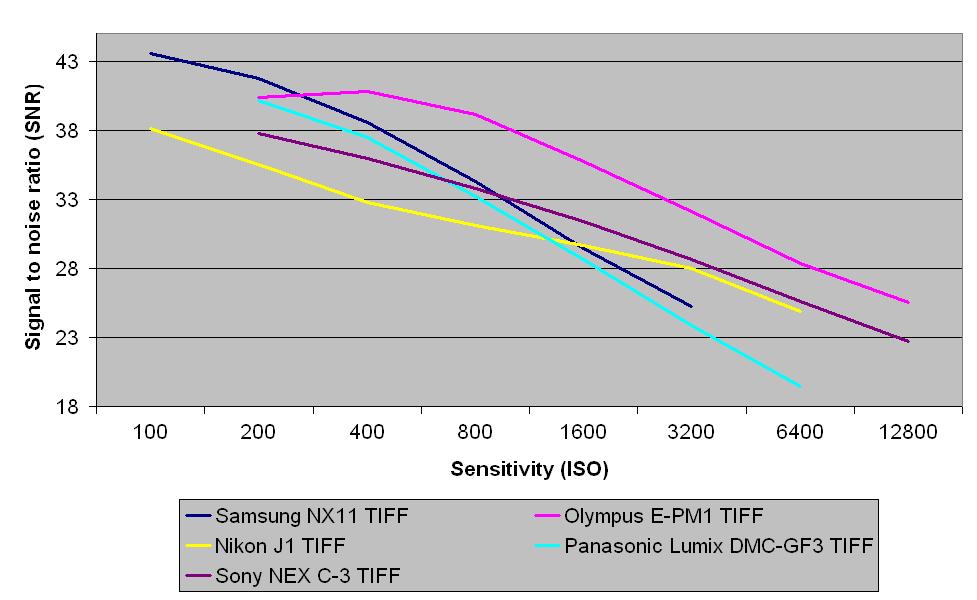
TIFF images (after conversion for raw) are on par with the Panasonic Lumix DMC-GF3, and show a better signal to noise ratio than the Sony NEX-C3 up to a sensitivity of ISO 800.
Dynamic range
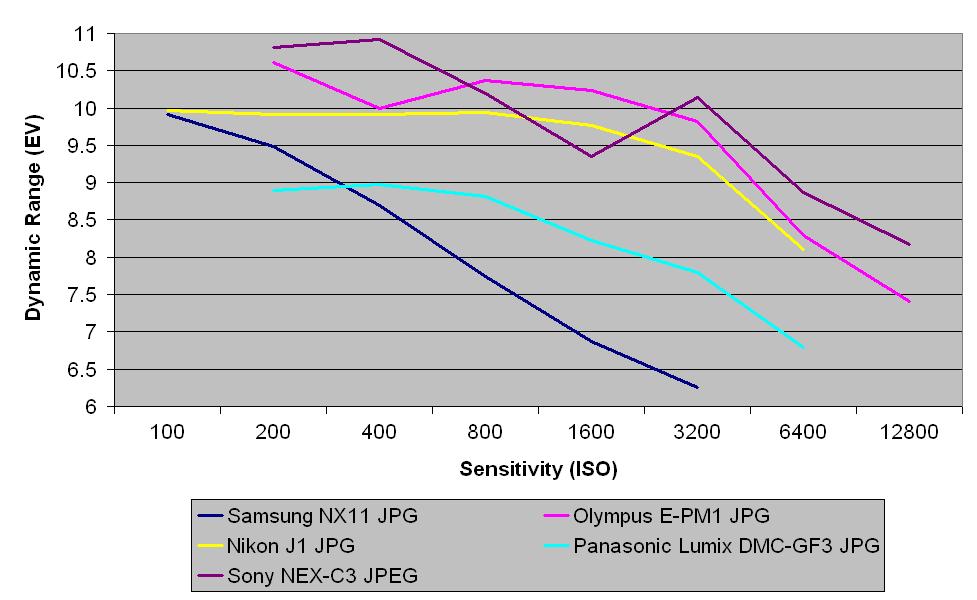
This chart indicates that the Samsung NX11's JPEGs lag behind the Olympus E-PM1, Nikon J1 and Sony NEX-C3 and only beat the Panasonic Lumix DMC-GF3 at ISO 200.
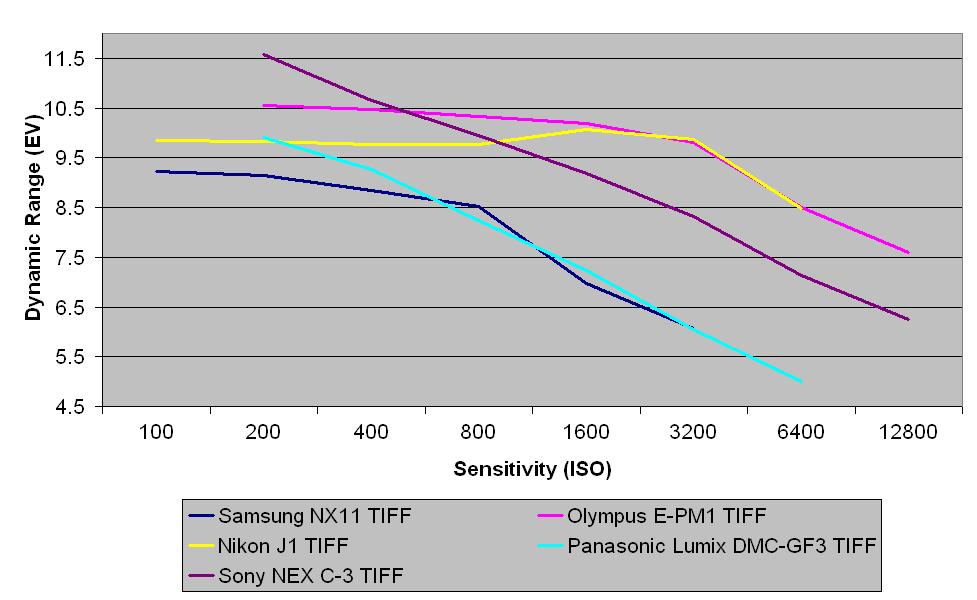
TIFF images (after conversion from raw) are similar to the JPEG files in that the dynamic range results lag behind those of the Olympus E-PM1, Nikon J1 and Sony NEX-C3, although they closely relate to the Panasonic Lumix DMC-GF3 from ISO 800 to 3200.
